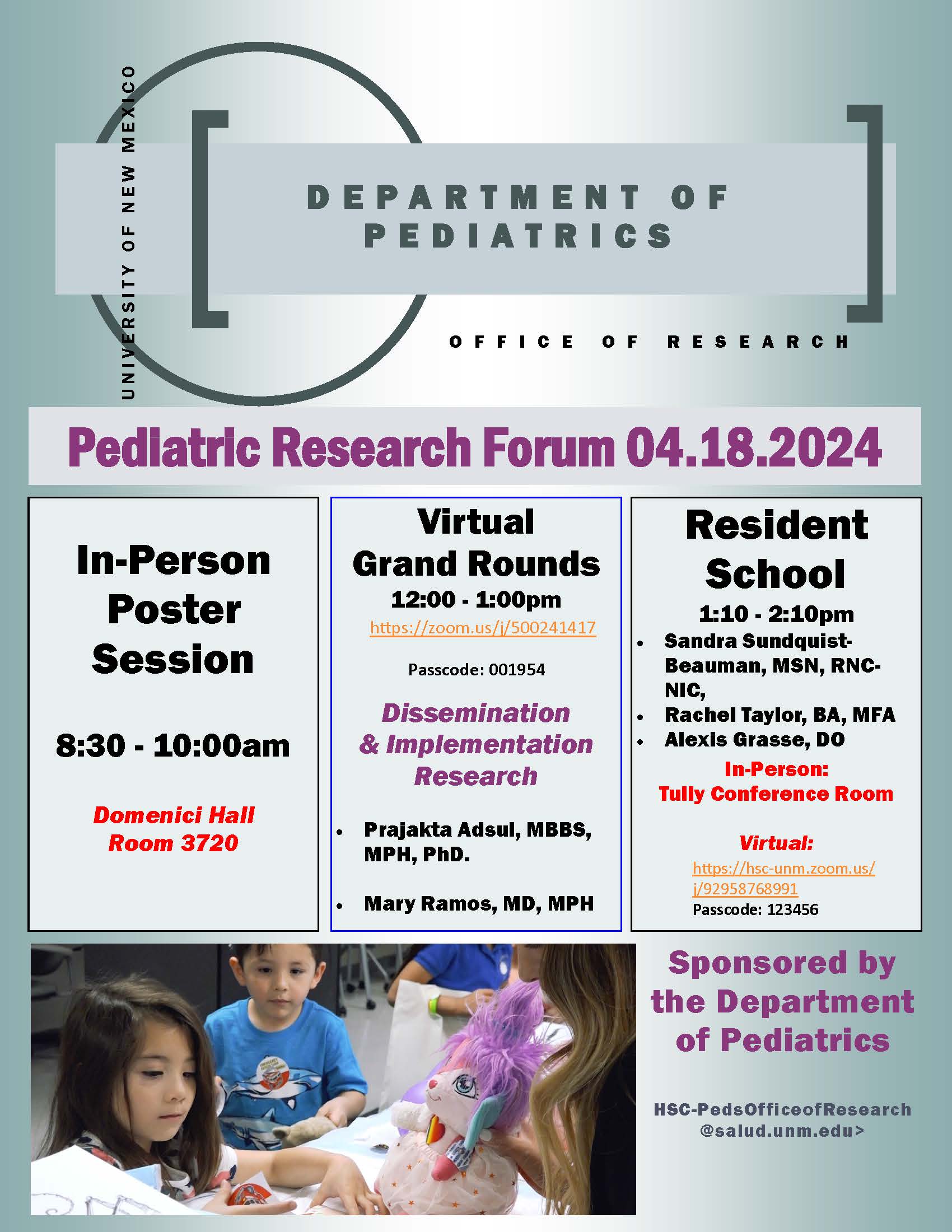Document Type
Poster
Publication Date
4-18-2024
Abstract
Background: Direct hyperbilirubinemia is frequently encountered in the NICU and is always a pathologic condition. It is exceedingly difficult to distinguish between common causes of direct hyperbilirubinemia based on laboratory work-up alone. Through retrospective chart review we aim to better establish the incidence of risk factors and progression of direct hyperbilirubinemia in the NICU, with the goal of streamlining the secondary evaluation.
Methods: A retrospective chart review was conducted for neonates admitted to the University of New Mexico Hospital NICU from February 1st, 2019, through February 1st, 2022 who had a direct hyperbilirubinemia level of .5 mg/dL or greater. Information collected included gestational age at birth, birth growth parameters, days required for parenteral and enteral nutritional regimens, liver enzyme levels, infection status, diagnostic results, biliary atresia status, and clinical attributions to the documented direct hyperbilirubinemia for each patient. A student’s t-test was used for continuous variable analyses.
Results: Twenty-two infants met inclusion criteria and were included in the analysis. Ten infants were small for gestational age (SGA), with the remaining twelve being appropriately grown (AGA). The SGA cohort was compared to the AGA cohort with no significant difference noted in gestational age at birth, birth length, birth head circumference, or temperature at admission (p’s > 0.1). The highest direct bilirubin level was significantly higher in the SGA group (7.3 vs 2.9, p<0.05). No differences were noted in the aspartate aminotransferase (AST), alanine aminotransferase (ALT) or gamma-glutamyl transpeptidase (GGT) levels (p’s>0.2).
Conclusion: Of the variables considered, there was a significant increase in the direct bilirubin level of infants classified as SGA versus those appropriately grown. No significant differences were noted in other liver enzymes.
Recommended Citation
Chavez, Maritza; Holly Kastendieck; Jessie R. Maxwell; and Dawn Novak. "Direct Hyperbilirubinemia and Infant Characteristics in a Newborn Intensive Care Population." (2024). https://digitalrepository.unm.edu/hsc_2024_pediatric_research/1

